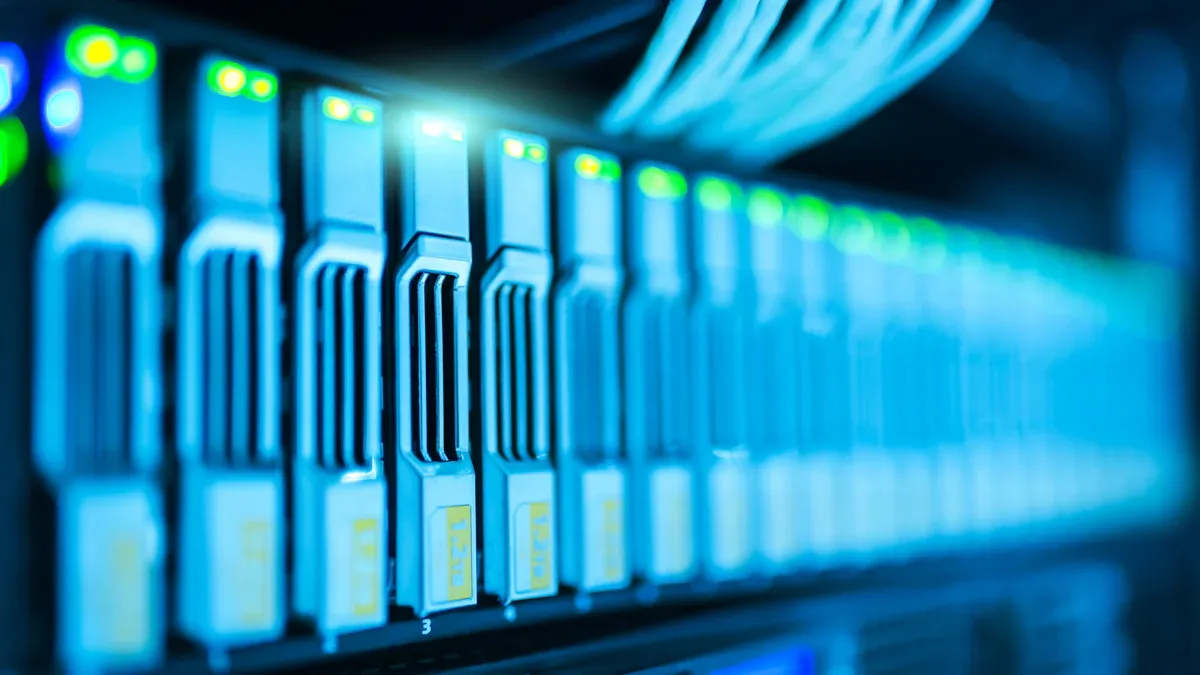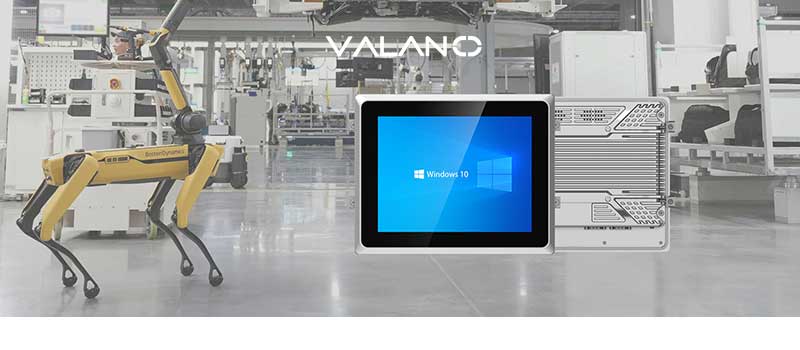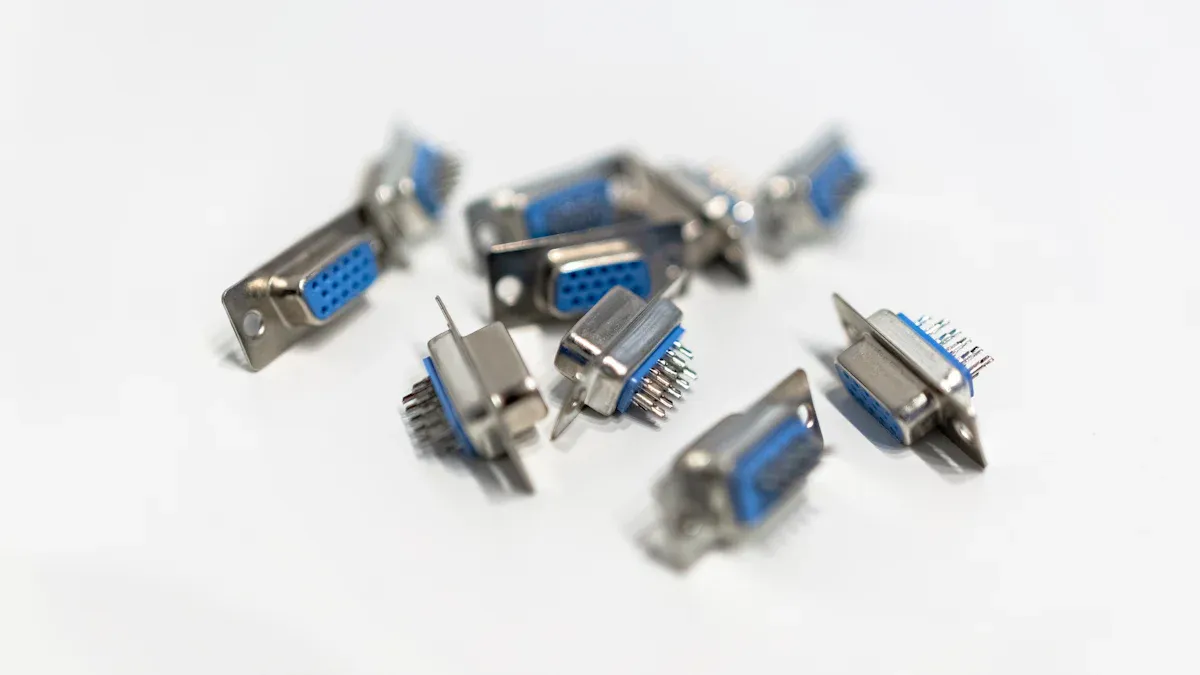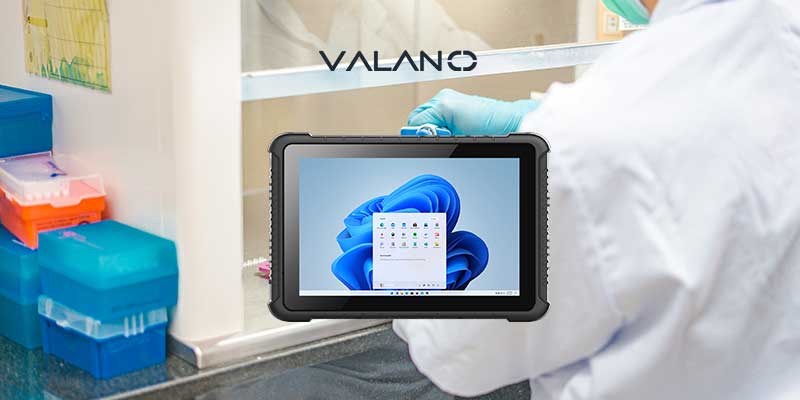
The RS232 port, also known as a serial communication port or COM port, is a widely used standard for devices to exchange data, especially in legacy systems where modern communication protocols are not compatible. Unlike parallel communication, RS232 transmits data one bit at a time through a single channel. It’s commonly found in industrial equipment, medical devices, and legacy systems. Despite newer technologies, the RS232 port remains in use due to its simplicity, reliability, and seamless integration with older systems.
Key Takeaways
RS232 ports help devices talk by sending one bit at a time. This makes them dependable for many uses.
Often found in industrial and medical tools, RS232 is still in use because it’s simple and works with older systems.
RS232 allows two-way communication, so devices can send and get data at the same time. This makes it work faster.
Even though it’s slower and has short cable limits, RS232 is still useful for connecting old equipment to new systems.
With adapters, RS232 can connect old devices to modern tech. This keeps them working without needing expensive replacements.
What is an RS232 Port and How Does It Work?

What Does RS232 Mean?
RS232, which stands for Recommended Standard 232, is a standard for serial communication that allows devices, such as computers and printers, to exchange data. Unlike parallel communication, which sends multiple bits simultaneously, RS232 serial communication sends data one bit at a time. This design simplifies communication between devices from different manufacturers and ensures compatibility across various systems.
The RS232 standard was created in 1960 by the Electronic Industries Association (EIA). It explains how devices should connect and send signals. Positive voltage means a binary '0,' and negative voltage means a binary '1.' This system works well for short distances. RS232 does not need a shared clock to work. Instead, it uses start and stop bits to control data flow.
Important Features of RS232 Ports
RS232 ports offer features that make them reliable for communication, including full-duplex transmission, which allows devices to send and receive data simultaneously. The most common RS232 connector types are DB-25 and DB-9, each with a specific pin configuration to manage data, control, and timing signals effectively.
The cable can be up to 50 feet long at 19.2 kbps speed. Shorter cables can handle faster speeds, up to 1 Mbps. RS232 also uses control signals like RTS (Request to Send) and CTS (Clear to Send) to manage data. These features make it great for tasks needing accurate communication.
Here’s a simple table of RS232 details:
Feature | Details |
|---|---|
Cable Type | Single-ended |
Communication Type | Full duplex |
Voltage Range | +3V to +15V (logic 0), -3V to -15V (logic 1) |
Top Speed | 1 Mbps |
Max Cable Length | 50 feet at 19.2 kbps |
Connector Types | DB-25, DB-9 |
RS232 is still used because it is simple and works with old systems. Its strong design makes it useful in many areas, like factories and hospitals.
Understanding the RS232 Port: Key Features and Functions
Basics of RS232 Serial Communication
RS232 helps devices share data using a simple serial method. It sends one bit at a time, which is slower than parallel methods but works better over long distances. This makes it less complicated and cheaper, perfect for reliable tasks.
RS232 allows devices to send and receive data at the same time. It uses asynchronous transmission, meaning no shared clock is needed. Start and stop bits keep the timing correct during data transfer. Positive voltages mean binary ‘0,’ and negative voltages mean binary ‘1.’
Data Transmission and Flow Control in RS232
RS232 sends data using special rules to keep it accurate. It can send data at speeds up to 115200 bits per second, which is good for medium-speed tasks. Flow control, like RTS (Request to Send) and CTS (Clear to Send), stops data loss by checking if devices are ready to communicate.
Here’s a quick look at RS232 data transmission:
Aspect | Details |
|---|---|
Maximum Data Rates | RS232 can send data up to 115200 bps. |
Flow Control Mechanisms | Uses RTS/CTS signals for smooth communication. |
Limitations | Works best for short distances and is affected by noise. |
When picking an RS232 cable, think about how far it needs to go. Shorter cables work faster, but longer ones might weaken the signal.
Pin Configuration and Signal Types in RS232 Ports
RS232 ports use specific pin setups to connect devices easily. The DB9 connector is common and has nine pins, each with a job. Some pins send data, others receive it, and some control the flow.
Here’s a simple DB9 pin guide:
Pin | Signal | Signal Name | DTE Signal Direction |
|---|---|---|---|
1 | DCD | Data Carrier Detect | In |
2 | RXD | Receive Data | In |
3 | TXD | Transmit Data | Out |
4 | DTR | Data Terminal Ready | Out |
5 | GND | Ground | - |
6 | DSR | Data Set Ready | In |
7 | RTS | Request to Send | Out |
8 | CTS | Clear to Send | In |
9 | RI | Ring Indicator | In |
The TXD pin sends data out, while the RXD pin receives it. RTS and CTS pins help control the data flow, making sure devices talk smoothly.
Knowing the pin setup helps you connect RS232 to other systems. It also makes fixing problems with old or industrial devices easier.
Practical Uses of RS232
Devices That Use RS232 Ports
Many devices still depend on RS232 ports today. In the past, computers used them to connect modems, printers, and mice. Now, they are important for industrial tools and scientific machines. Older equipment, like data storage systems and UPS devices, also use RS232.
RS232 is very common in factories. It is simple and reliable, making it great for control systems and testing tools. While USB and Ethernet are faster, RS232 works well for direct connections where speed is not a big deal.
Applications in Industrial Automation and Diagnostics
In factories, RS232 helps machines stay connected. Many old systems with RS232 are still used in labs and factories. Replacing these systems can cost too much money. RS232 is a cheaper way to send data and control machines.
You can find RS232 in PLCs and HMIs. These devices need RS232 for steady communication. Diagnostic tools also use RS232 because it resists electrical noise, keeping data accurate. In smart factories, RS232 links old machines to new systems, helping improve processes.
Use of RS232 in Legacy Systems and Maintenance
RS232 is key for fixing and using old systems. Many older machines and network tools need RS232 for setup and repairs. Adapters let RS232 connect to Ethernet or newer systems.
For example, RS232 helps connect old machines to modern control systems. This lets you gather data and boost efficiency without replacing machines. RS232 is strong and easy to use, making it perfect for keeping old systems running.
Key Benefits and Limitations of RS232 Ports
Benefits of RS232 Serial Ports
RS232 serial communication offers many advantages, especially for legacy systems. Its simple design is one of its best features, making it easy to set up and maintain in industrial automation and other legacy applications where compatibility with modern technologies is not required. Setting up and fixing RS232 connections is easy and doesn’t need advanced skills. This is helpful in factories where quick repairs are important.
Another advantage is its ability to work with many devices. RS232 connects equipment from different brands without needing special adapters. It also allows longer cables than some newer options. This is useful in factories where machines are far apart.
RS232 doesn’t need drivers or tricky setups like modern systems. This makes it simple to use, especially with older machines. Picking the right RS232 cable ensures smooth data transfer over short or medium distances.
Limitations of RS232 Compared to Modern Technologies
RS232 has some downsides when compared to newer systems. Its data speed is much slower. RS232 can send data up to 115200 bps, which is far less than USB or Ethernet.
Cable length is another problem. RS232 cables usually can’t go beyond 50 feet. Even at this length, signals can weaken due to noise. Newer systems handle longer distances better. RS232 also works in simplex or half-duplex modes, so it can’t send and receive data at the same time as well.
Limitation | RS232 | Modern Technologies |
|---|---|---|
Data Transmission Speed | Slower than modern protocols | Higher speeds available |
Maximum Cable Length | Typically not exceeding 50 feet | Longer distances supported |
Susceptibility to Interference | Prone to noise and interference | More robust against interference |
Communication Type | Simplex | Full duplex capabilities |
These issues show why RS232 isn’t great for fast or long-distance tasks.
RS232 vs. USB and Ethernet: A Comparison
RS232 vs USB and Ethernet: When compared to newer technologies like USB and Ethernet, RS232 shows significant differences in performance. While RS232 typically transfers data at 19.2 Kbps, USB can start at 1.5 Mbps and go up to 40 Gbps, making it ideal for high-speed applications. Similarly, Ethernet can reach speeds of 1 Gbps or higher, far exceeding RS232's capabilities in terms of data transfer speed.This makes RS232 less useful for high-speed needs.
Power supply is another difference. RS232 needs an external power source. USB can send power and data together, supporting up to 20V and 5A. Ethernet now offers Power over Ethernet (PoE) for some devices, making it more flexible.
RS232 is still good for slow tasks like connecting old machines or sensors. But USB and Ethernet are better for modern uses, like streaming videos or large networks. You can use adapters to connect RS232 to Ethernet, but this can make setups more complicated.
Why RS232 is Still Important Today
Special Uses of RS232 Ports
RS232 remains essential in industries such as automated manufacturing and medical devices, where older machines require RS232 communication to function properly. Replacing these devices can be costly and unnecessary, especially when RS232 connectors and adapters allow for seamless integration with newer systems. RS232 works well for simple one-to-one communication. It is cheap and dependable. It also handles electrical noise better than other systems, making it great for factories and labs.
Some industries rely on RS232 because it is simple and strong. For example:
Factories use RS232 to connect older machines.
Hospitals use RS232 for safe and steady device communication.
Smart buildings use RS232 to control systems like air conditioning.
These examples show why RS232 is still used, even with newer technology available.
Working with Older Systems
RS232 is great for working with older devices. Many old tools, like routers and factory machines, were built with RS232. Replacing these tools can cost too much and take a long time. Instead, RS232 can link old devices to new systems using adapters.
Here’s how RS232 helps with older systems:
Use Case | Details |
|---|---|
Connecting Old Devices | Many old tools need RS232 to share data. |
Setting Up Network Equipment | RS232 helps fix and set up routers and switches. |
Testing and Debugging | RS232 is used in testing boards for fixing hardware and software. |
Reliable in Noisy Areas | RS232 works well in places with lots of electrical noise. |
This makes RS232 a smart choice for keeping older systems running smoothly.
RS232 in the Future
RS232 is changing to fit modern needs. It now works with USB and Ethernet, making it more flexible. Smaller RS232 chips fit into tiny devices, which is helpful for IoT gadgets. New security features, like encryption, make RS232 safer for sensitive tasks in healthcare and factories.
The growth of smart factories increases the need for RS232. It connects old machines to new systems, helping them work together. While faster systems are used for big tasks, RS232 is still trusted for simple and steady jobs.
RS232 is a simple and useful way for devices to talk. It sends one bit at a time and doesn’t need a shared clock. Devices can send and receive data at the same time. The voltage levels it uses help keep signals clear, making it great for short distances.
Even with newer options like RS422 and RS485, RS232 is still popular. It’s often used in factories, hospitals, and data systems. Its easy design and reliability make it perfect for older machines and equipment.
RS232 is great for steady communication that resists noise. It helps connect old devices to new systems, keeping it important for certain jobs.
FAQ
1. What does an RS232 port do?
An RS232 port helps devices share data using serial communication. It is often used with older machines, factory tools, and testing devices. Its simple design and dependability make it great for steady and accurate tasks.
2. Can RS232 work with new devices?
Yes, RS232 can easily connect with new devices using RS232 to USB adapters or converters. These tools help integrate RS232 ports with modern interfaces like USB and Ethernet, allowing legacy systems to continue working without costly replacements.
3. How to identify RS232 connector types?
To identify an RS232 port, look for a DB-9 or DB-25 connector. These are often labeled as COM or Serial ports. The DB-9 connector features nine pins, while the DB-25 has twenty-five pins, both arranged in a D-shaped design.
4. Why is RS232 still in use today?
RS232 is still used because it works well with older systems and factory machines. It is affordable, simple to use, and handles electrical noise well. These qualities make it a reliable choice, even with faster technologies available.
5. How long can an RS232 cable be?
An RS232 cable can be up to 50 feet long at 19.2 kbps speed. Shorter cables can handle faster speeds, but longer ones may lose signal quality due to noise and interference.







